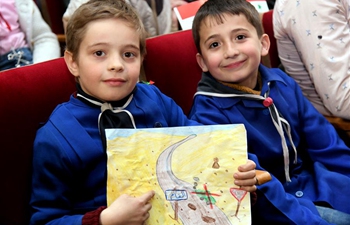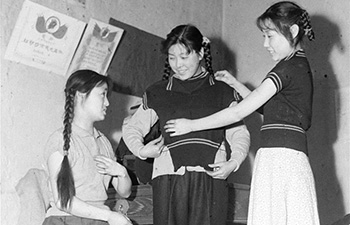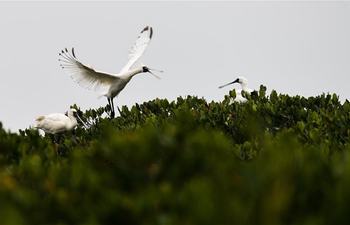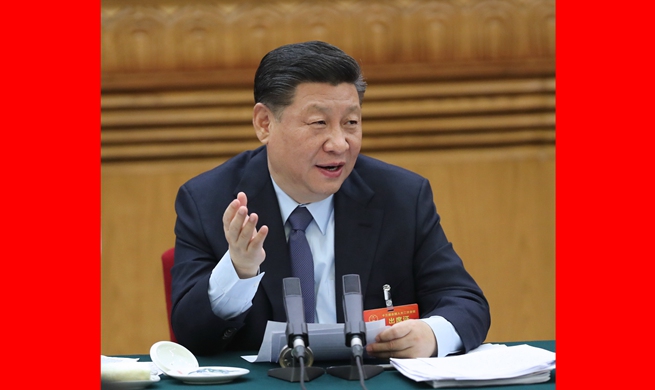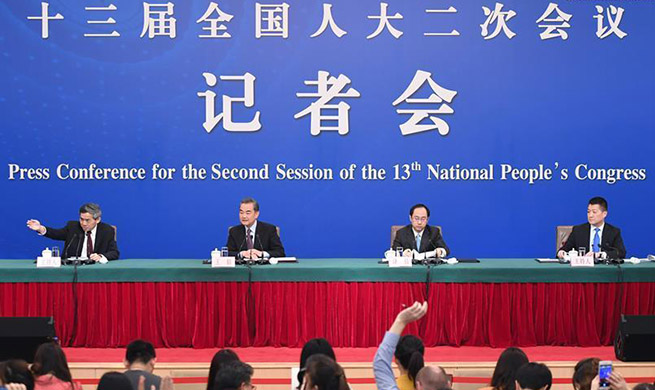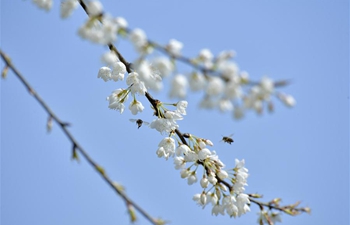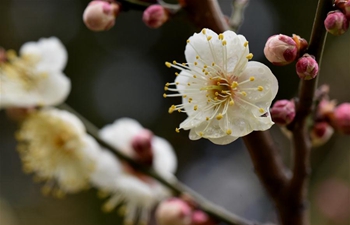by Xinhua writer Yu Fei
BEIJING, March 8 (Xinhua) -- The moon has traditionally been associated with women, maybe because the menstrual cycle is roughly the length of the waxing and waning lunar cycle. Now China's lunar exploration program, named after the moon goddess Chang'e, is highlighting the contributions of female scientists and engineers.
ENVIABLE COUPLE
In Chinese legend, Chang'e flew to the moon and became a goddess, but could never return to Earth to reunite with her husband.
She would have envied a young couple in the research team that developed the Chang'e-4 probe, which made the first ever soft landing on the far side of the moon this year.
Qi Tianle married her beau, Ma Qianli, on Sept. 9, 2018, after dating for about 10 years. On their wedding night, they packed for a special three-month "honeymoon". The next day, they set off to Xichang Satellite Launch Center, in the mountains of southwest China' Sichuan Province, to prepare for the launch of Chang'e-4.
Classmates in school, they had both gone to work in the China Academy of Space Technology (CAST) after graduating from university in 2013, and joined the Chang'e-4 team in 2017.
They chose the date of their wedding a year earlier, but later found it coincided with transport of the probe to the launch center. Their colleagues didn't want their wedding delayed, and asked them to go to the launch center after the ceremony.
Just two days after they took their marriage vows, they made a pledge to complete the mission successfully before the national flag at the launch center.
Although they spent most of the "honeymoon" in front of computers preparing for the launch, they enjoyed taking walks in the moonlight after supper.
"We are happy to see Chang'e-4 carry our hopes to visit the moon," said Qi.
LOVE FOR JADE RABBIT
Zhang Yuhua, a space engineer with the Shanghai Academy of Spaceflight Technology and deputy chief designer of the Chang'e-4 probe, had been part of China's manned space project for 18 years before she joined the lunar exploration team in 2006.
Making a lab simulation of the running of the rover on the moon was one of the big difficulties.
The researchers got volcanic ash from northeast China's Jilin Province to simulate the lunar soil. When the rover moved on the ash, it raised dust, causing irritation if inhaled or rubbed on the skin.
To avoid dust, the lab air conditioner was turned off in the summer. The indoor temperature was over 40 degrees centigrade.
Zhang and her colleagues wore masks, raincoats and rain-shoes to do the experiments, and were drenched in sweat.
After China's first lunar rover, named Yutu, or Jade Rabbit, landed on the moon during the Chang'e-3 mission at the end of 2013, Zhang went to work every day as the moon rose.
However, Yutu suddenly stopped moving after going about 114 meters on the moon.
In the bid to revive it, Zhang felt great stress, and suffered ulcers in her mouth and a hoarse voice.
"I was thinking if China could send people to the moon at that time, I would like to be the first to go. I wanted to repair our Jade Rabbit so much," Zhang recalled.
All their efforts failed. Avoiding the same problem again became the challenge facing the team when they developed the new rover for the Chang'e-4 mission.
"We cared for Jade Rabbit like our own child. I thought it was like a silver swan standing on the desolate moon, more beautiful than anything else," said Zhang.
"Now, our second rover, Jade Rabbit-2, has landed on the far side of the moon. We hope it will realize our dream," she said.
"I have never doubted the significance of my work. I believe humans will go much further into the universe in the next 100 years. But life is too short, and I can only do my best," Zhang said.
BECOMING BRAVE
Zhang He, 48, executive director of the Chang'e-4 probe project from CAST, believes the women in her design team have a stronger sense of responsibility and self-esteem than many men, and are more meticulous and better at communicating.
Zhang had read the book, Lean In, by Sheryl Sandberg, chief operating officer of Facebook, which encouraged women to show their talents in work. Like the author, she often found herself the only woman at meetings.
"I respect and envy full-time mothers. This is a personal choice. We have to accept what we have chosen, both the gains and losses," Zhang said.
She took her son to gaze at the stars when he was very young. Now her son is 12, and loves mathematics and astronomy.
"I don't have much time with him each day, but we are very close. My son can see my endeavors to chase my dream and is influenced by me," Zhang said.
Her husband was a classmate in university. He disagreed with those who said Chinese people lack creativity and innovation. "My wife is a space engineer. I saw how she worked hard to send spacecraft to the moon."
"I can feel the understanding and support of my family in my work," said Zhang.
Lunar exploration has made her braver and more confident.
"When we began to develop the Chang'e-3 probe, the noise generated by the variable thrust engine was terrifying. But I grew used to it," she said.
"We encountered a lot of technical difficulties in developing the lunar probe, but we overcame all of them. They were like problems in life, and were solved eventually."
A career in space exploration also changed the lives of Zhang's family. On vacation, Zhang asks her husband to make a very detailed plan to consider all possible scenarios. This makes the journey more relaxed.
Zhang and her team like to call China's four lunar probes the "four sisters."
"I believe, Chang'e-4, the little sister, will be braver, smarter and stronger than her elder sister, Chang'e-3, and perform excellently," Zhang said.






